Are you passionate about design? Do you have a creative flair and an eye for detail? If yes, then you should learn how to start a design blog to share your passion with the world.
Not only is blogging a great way to share your thoughts and ideas with the world, but it can also be a very lucrative way to make money online.
In this post, we’ll show you how to start a design blog and make money online. By the end of this guide, you will have everything you need to start and run a successful design blog.
So what are you waiting for?
Let’s get started!

How to Start a Design Blog in 7 Steps
- Define Your Design Blogging Goals
- Choose a Design Niche
- Pick & Register a Blog Domain Name
- Setup WordPress
- Write & Publish Blog Posts
- Promote Your Design Blog
- Monetize & Make Money
1. Define Your Design Blogging Goals
The first step in starting a design blog is to define your goals.
- Are you blogging to share your passion for design with the world?
- Do you want to generate leads for your design services?
- Or are you looking to make money from your blog?
Maybe you have other goals!
Whatever your goals are, it’s important to have a clear idea of what you want to achieve with your design blog before you get started.
This will help you stay focused and motivated as you work on building and growing your blog.
What is a Design Blog?
A design blog is a blog that focuses on the topics of design, art, and creativity. Design blogs can cover a wide range of topics, from graphic design and web design to fashion and interior design.
Why Start a Design Blog?
There are many reasons why you might want to start a design blog.
Maybe you want to share your passion for design with the world.
Or maybe you’re looking for a creative outlet to express your ideas and inspirations.
Whatever your reason, starting a design blog can be a fun and rewarding way to spend your time.
The benefits of starting a design blog include:
- Connecting with a global community of design lovers
- Boosting your professional credibility and qualifications
- Expanding your network and building new relationships
- Monetize and make money from your design skills and knowledge
How much money can you make from design blogging?
You can make $15-$25 for every 1000 ad views on your design blog. An SEO optimized blog post can get anywhere between 300 to 1000 visits per month. So, a design blog with 100 blog posts can make as high as $2500 every month. You can make even more money if you monetize with affiliate marketing and digital products.
2. Choose a Design Niche
Once you know what your goals are, it’s time to choose a niche for your design blog.
A niche is simply a particular topic or area of interest that you want to focus on as part of your design blog.
Why choose a niche?
Choosing a niche is important because it will help you stand out and attract your target audience.
It can also make it easier to create content, promote your blog, and monetize.
If you don’t choose a niche, your blog will likely be all over the place and it will be much harder to attract readers and followers.
Finding Your Ideal Niche
The best way to find a niche for your design blog is to think about what you’re passionate about.
What topics in design do you enjoy writing about or talking about?
What are you knowledgeable about?
You should also consider what your target audience might be interested in reading about.
For example, if you want to start a design blog for new moms, you might want to focus on topics like nursery design, kids’ room design, or how to decorate a home on a budget.
There are many different design niches that you could focus on, including:
- Graphic design
- Web design
- Fashion design
- Interior design
- Art and illustration
- Product or packaging design
- Logo Design
If you want to start a blog in the interior design niche, then check out our guide on how to start an interior design blog.
However these are really broad niches, so you might want to narrow down your focus even further.
For example, if you’re interested in fashion design, you could consider focusing on a specific style or trend, such as gothic fashion or bohemian style.
If you are interested in web design, you might want to focus on WordPress themes or a specific group like web design for real estate agents.
Examples of Design Blog
Sometimes looking at other design blogs will help inspire ideas of your own. Here are some of the more popular examples of design blogs:
[auto-list-number] Identity Designed
This is a blog by David Airey which focuses on brand identities. It showcases branding work from studios worldwide and includes designs from Brazil, the USA, Mexico, Australia, Vietnam, Sweden, and France. Creators can submit their designs to be showcased in the Identity Designed blog.
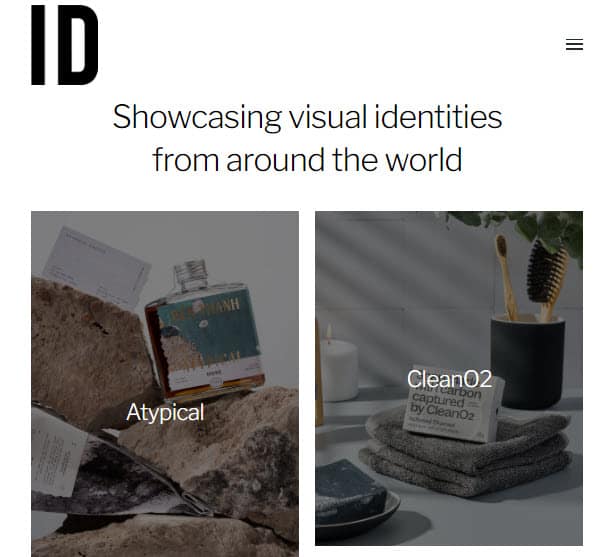
[auto-list-number] I Love Typography
This blog is all about, you guessed it, typography. It features articles about typeface design, how to pick the right typography for your brand, and how designers are using type in their marketing campaigns.
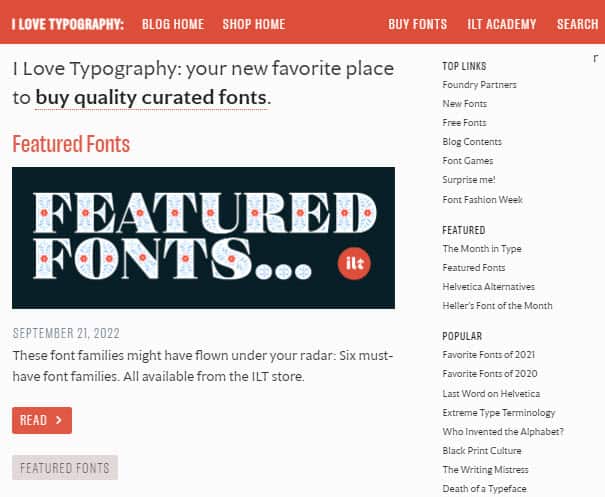
[auto-list-number] BP and O
BP and O (Branding Packaging & Opinion) is a blog dedicated to brand identity, packaging design, and graphic design. It features articles about how big brands are using typography in their branding, how businesses are rebranding, and how they can stand out from the crowd.
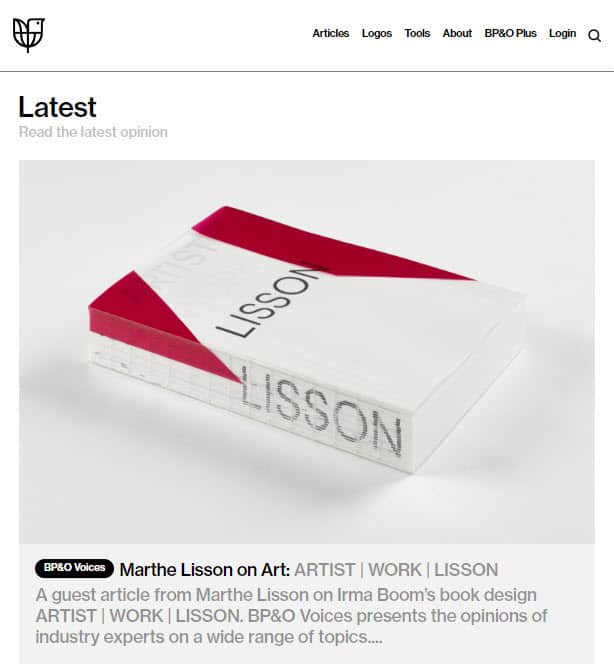
[auto-list-number] Good on You
This is a fashion design blog focused on sustainable and ethical fashion. It explores how the fashion industry is changing, how to shop ethically, and how brands are making a difference.

[auto-list-number] Amber Interiors
Amber Interiors is an interior design blog run by Amber Lewis. It focuses on modern and bohemian-style interiors, how to achieve the look in your own home, and how to become a successful interior designer.
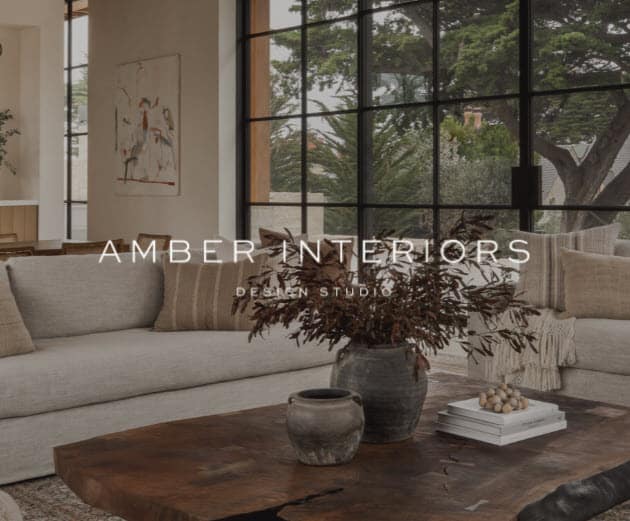
3. Pick & Register a Blog Domain Name
Once you have chosen your niche, it is time to brainstorm a few names for your design blog.
We recommend you keep your design blog’s name to two words (Example: Identity Designed). One of the two words should be a keyword from your niche. The other word can be something that makes your website brandable. For example, our blog teaches people how to make passive income, so we have named it Passive Book.
Here are some of the words that you can mix and match into your blog name:
- Design
- Designed
- UX
- Graphic
- Interior
- Fashion
- Creative
Use a Business Name Generator to brainstorm the name of your blog.
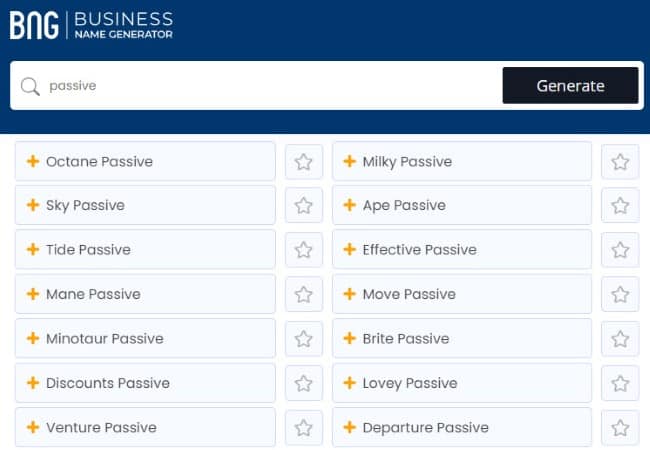
You can also use your own name for your blog. But if you ever plan to sell your website in the future, it is much more difficult to transfer your brand to the buyer when it is your name.
Check Domain Name Availability
After you have brainstormed a few names for your design blog, you should check if the .com domain name is available.
A blog’s domain name is the web address of your blog. It is how people will find your blog online. It is usually your blog name followed by .com.
You must check if both the .com domain name and the social media handles are available. You can use Namechk to check the availability of both your domain name and social media handles.
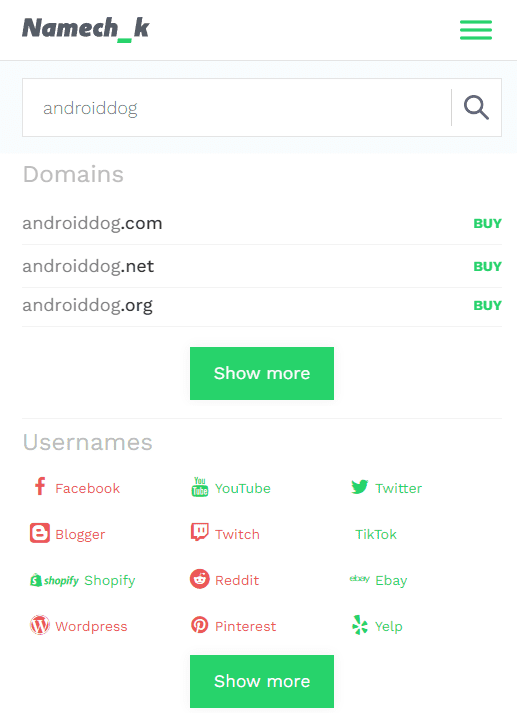
Here are a few things to keep in mind when selecting a domain name:
- Choose a .com domain name. 86% of the internet uses .com, so your visitors are likely to try visiting your blog by typing .com. Avoid other extensions like .net or .org.
- Don’t include hyphens and numbers.
- Do not use words with multiple spellings (for example colour vs color).
- Shorter domain names are better. Try to keep it under 12 characters.
- Spelling & Pronunciation should be easy and intuitive.
- It should be easy to remember.
- Avoid words that can be misread together. For example, therapistjohn.com can be read as Therapist John or The Rapist John.
- Make sure it’s not trademarked or copyrighted by someone else. The AI writing software Jarvis.ai had to rebrand to Jasper.ai because Marvel sued them for the Iron Man reference. Lawsuits will happen once your blog is established.
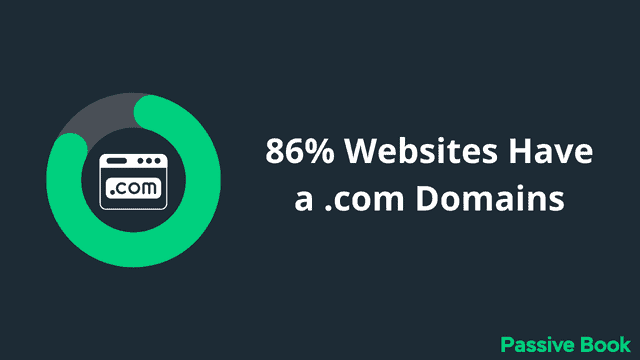
Register a Domain Name
Once you decide your domain name it is time to register it.
You should register your domain with NameCheap because you will get domain privacy for free. Other providers charge $12 per year for domain privacy. Without domain privacy, your name, home & email address will be accessible to the public.
Step 1: Go to NameCheap. Enter your domain name with the .com extension.
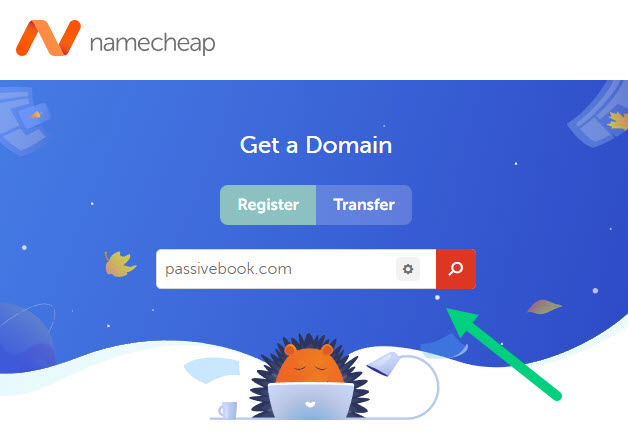
Step 2: Select the .com extension and click the Add to Cart button.
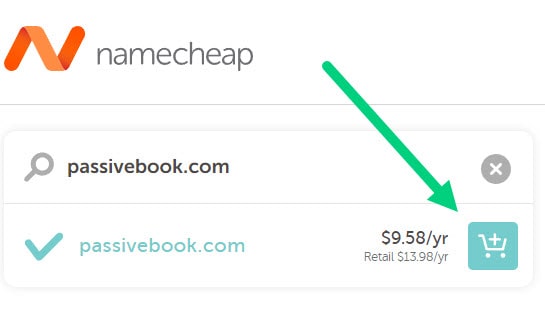
Step 3: After adding the domain to the cart, click on the Checkout button.
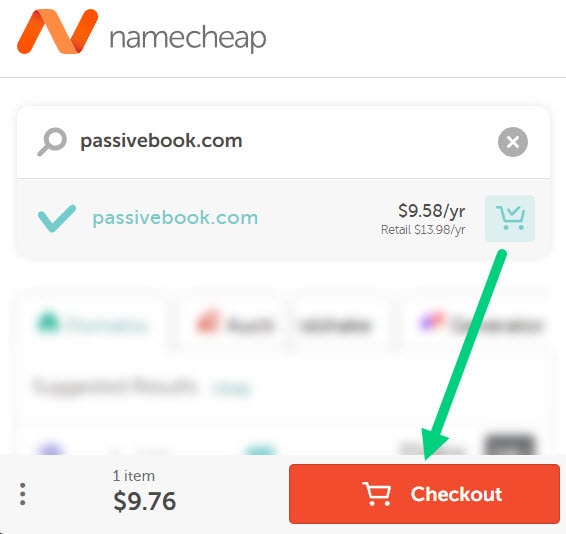
Step 4: Enable Domain Privacy that comes for free along with auto-renew. You don’t need any other paid addon.
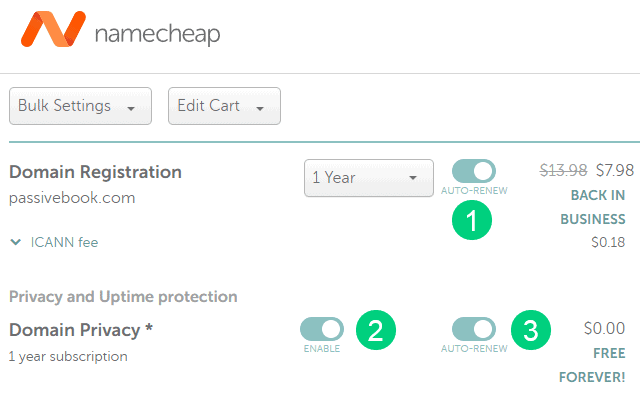
Step 5: Click on Confirm Order. Pay to complete your purchase.

Step 6: Log in to Namecheap and click on Domain List ❶ in the left sidebar and then click Manage ❷ next to the domain you just purchased.
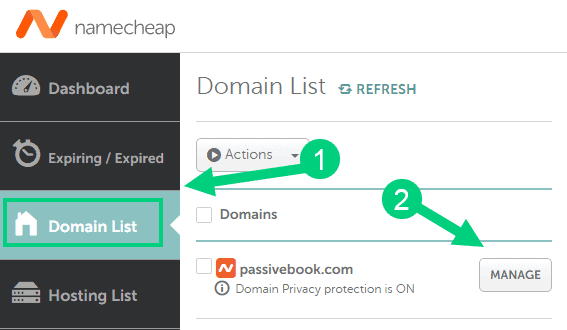
Step 7: Under the Nameservers section, select “Custom DNS” from the dropdown ❶. Then enter the following two nameservers ❷ ns1.bluehost.com and ns2.bluehost.com as shown in the image. Then click the green tick ❸ to save. If you use a hosting provider other than Bluehost, enter their nameserver values in this step instead.
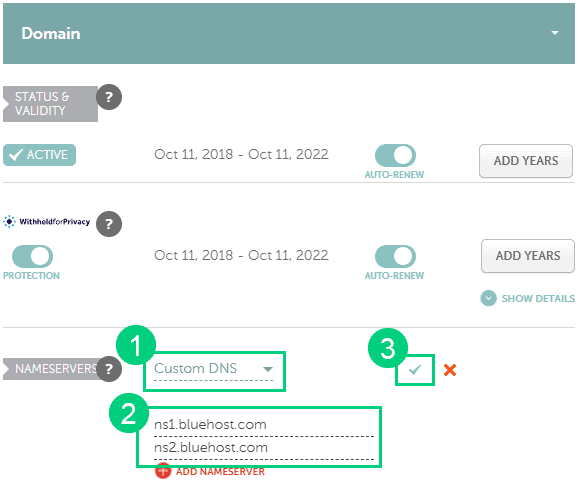
Can I get a free domain name?
Your web hosting provider might give you a free domain name for one year but they charge $12 for domain privacy which is free in Namecheap. From the second year, you will pay for both the domain and privacy which will cost you more than $20+. So it is cheaper to just register your domain with Namecheap from the beginning. Also using different companies for web hosting and domain registration will allow you to easily switch your blog host later without transferring domains.
Can I change the name of my blog later?
You will lose your search engine rankings if you change your blog’s name once it gets links from other websites. It will take as long as a year or more for you to regain the lost traffic. It is possible to mitigate problems by having proper redirects. But you will have to renew both your old and new domains every year. So try to avoid changing your blog’s name once it is established.
4. Setup WordPress
The next step is to get your blog up and running in WordPress.
WordPress is a content management system (CMS) that allows you to easily create a website or blog without any coding knowledge.
Why Choose WordPress.org?
There are many blogging platforms but the self-hosted wordpress.org powers 70% of blogs on the internet. 42% of all websites on the internet use WordPress.

It is the most popular platform for bloggers because of its ease of use and powerful features.
WordPress has over 50,000 free themes that you can choose from to customize your blog design.
There are also thousands of free and premium plugins available to add more functionality to your blog.
Plus, WordPress is open-source software that is constantly being improved by a community of developers.
WordPress.org vs WordPress.com
There are two versions of WordPress:
WordPress.com – A free platform that is hosted by WordPress. You can start a blog for free and even use a custom domain name. However, you have limited control over how your blog looks. You cannot monetize your blog and make money from it. This version of WordPress also does not allow you to upload plugins so you can’t customize the functionality of your blog.
WordPress.org – Also known as self-hosted WordPress. You will need to purchase hosting and a domain name to use this version of WordPress. This gives you complete control over how your blog looks and how it functions. You can monetize your blog with ads or with affiliate links, sell digital products, and more.
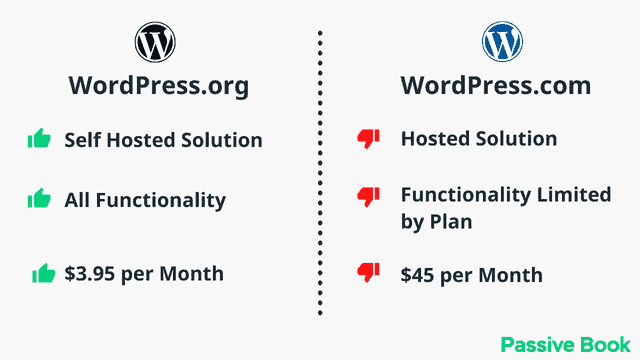
If you are planning on starting a design blog, we recommend using WordPress.org because it gives you the most control over how your blog looks and how it functions.
Why Avoid Free Blogging Platforms
There are many free blogging platforms available like Blogger, Tumblr, and Wix, but they have many limitations that you need to be aware of.
For example:
- It is difficult to drive traffic from search engines to these free platforms because they are not SEO optimized.
- There is limited control over how your blog looks and how it functions.
- Some platforms do not allow you to monetize your blog with ads or affiliate links.
- You will have a subdomain name like yourblog.blogspot.com which does not look as professional as a custom domain name.
- You do not own the content on these platforms. They can shut down your blog at any time for any reason.
If your blog is deleted by the platform, you will usually see the following screen:

For all these reasons and more, we recommend following this guide and creating a self-hosted WordPress website.
How much does it cost to start a design blog?
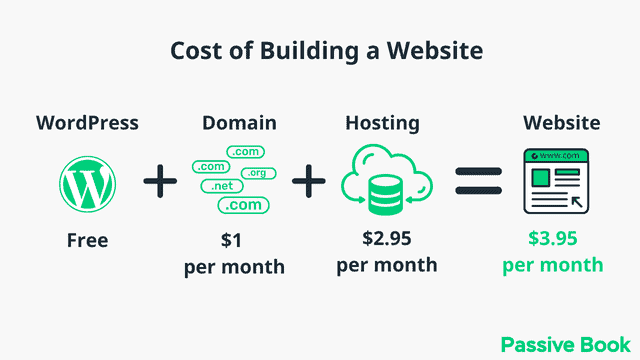
It will cost you $2.95 per month to host your WordPress design blog in Bluehost. A domain will cost you $12/year. So that is a total of $4.2 per month, which is less than the price of Netflix for all the unlimited features that a self-hosted WordPress blog has to offer.
What to do if you already have a free blog?
Migrating to WordPress from another platform is a very easy process using a free plugin. This plugin will automatically migrate all your content, including images, from your old platform to your new WordPress blog. Plus, it will keep all your permalinks and other settings intact so you don’t have to worry about any of your existing traffic and search engine rankings being affected.
Install WordPress in Hosting
WordPress is a free content management system (CMS) that allows you to easily create a website or blog without any coding knowledge.
However, to use WordPress you need to have hosting. Hosting is the space on a server where your website files are stored. When your website is visited in a browser, your web host transfers files from its server into your visitor’s browser to load your web page.
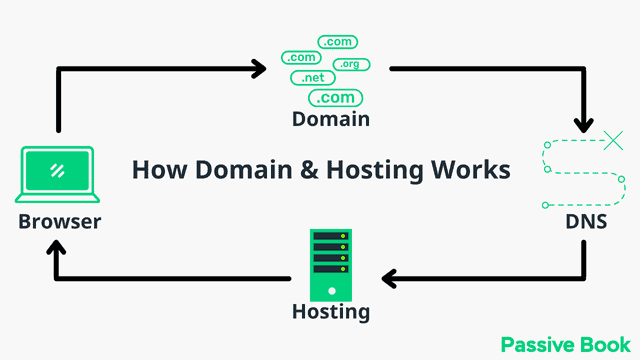
For this guide, we will use BlueHost as our web host. It is a cheap hosting that is extremely easy for beginners to set up. If you use any other web host, the steps will be the same but the user interface may be slightly different.
1. Go to BlueHost using this link to get a special discount. Select WordPress > WordPress Hosting from the top menu.
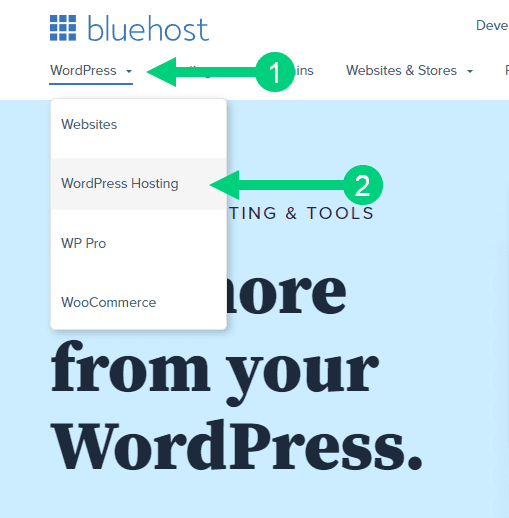
2. Click on the button you see on this page and you will be taken to the pricing section.
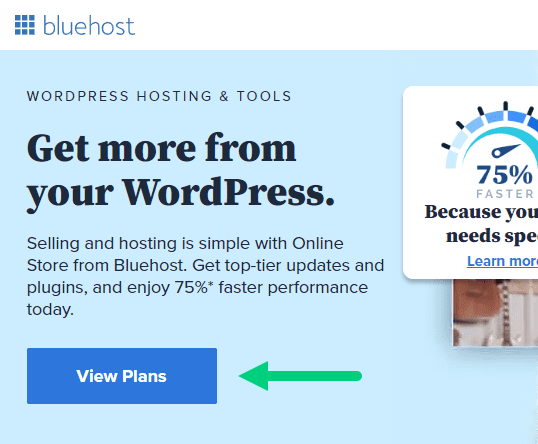
3. Select the Basic Plan. You can upgrade to a different hosting plan as you grow.

4. If you already have a domain name that you purchased with Namecheap you can put that in the “Use a domain you own” ❶ section. If you don’t have a domain name yet, choose the “Create a New Domain” ❷ to purchase a new domain.
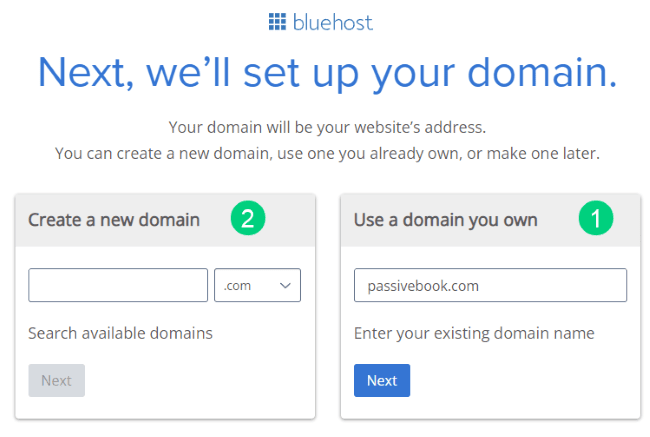
5. In the next screen, enter your information. Uncheck all package extras. If you purchase your domain through Bluehost instead of Namecheap, you may want to enable Domain Privacy. You won’t see the Domain Privacy option if you bought your domain through Namecheap. Namecheap will give you this Domain Privacy for free.
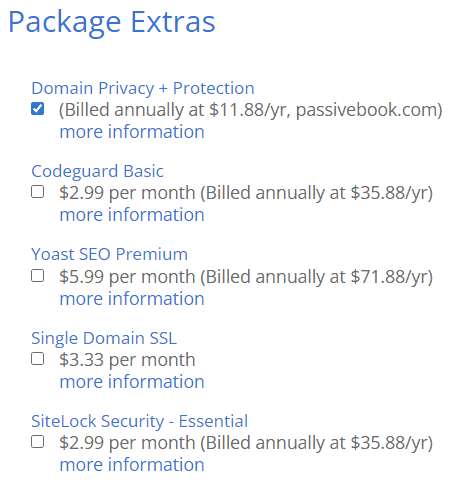
6. Once you have successfully paid, you will be prompted to set a password. Click on the “Create your Password” button.
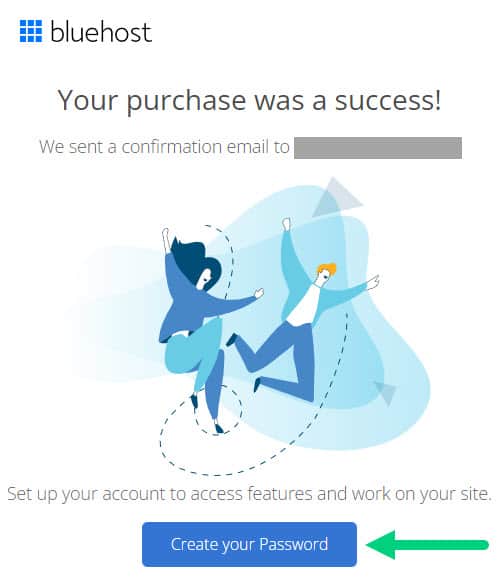
7. Enter your password and create your account. If you lose this password, you can reset it.
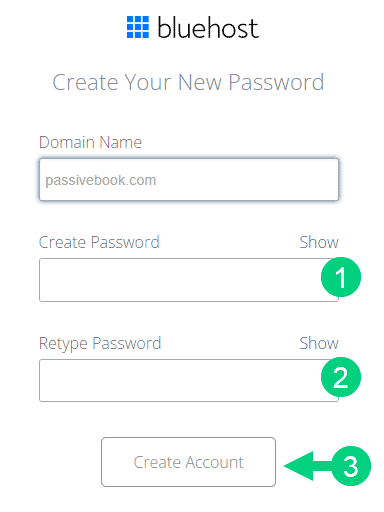
8. After you set your password, log in to Bluehost.
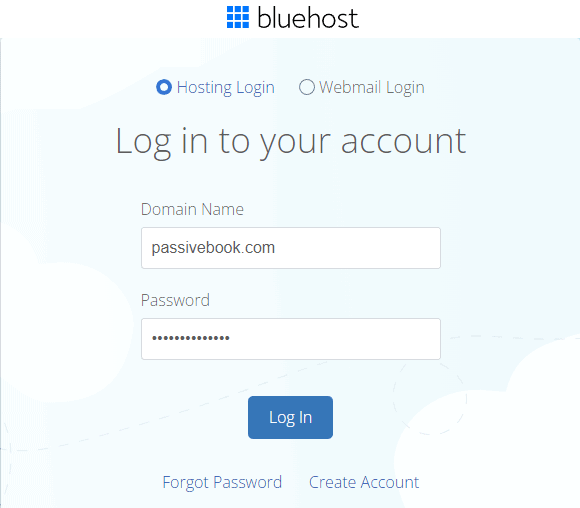
9. Click on the Create your website button on the following screen. This will start a Bluehost Wizard, just click Skip this step wherever possible.

10. On the following page, click “No help needed” or “Skip this step”. We don’t want Bluehost to limit our customization options.
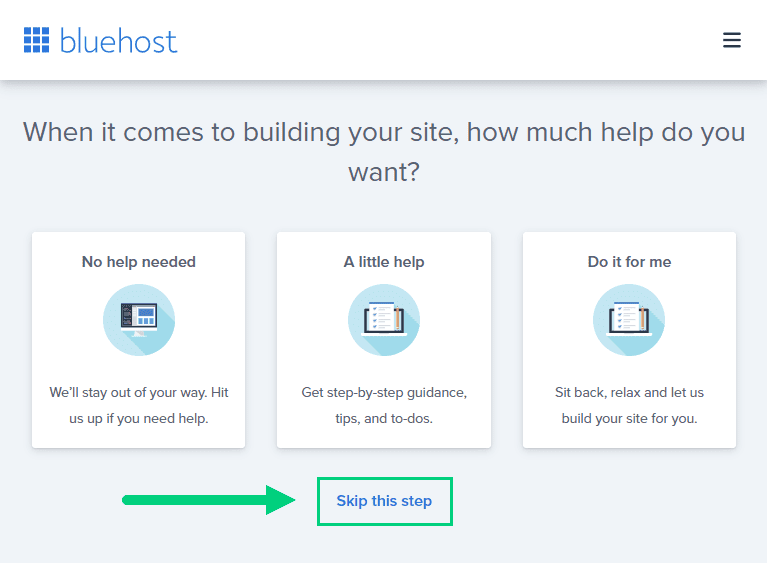
11. On the next page, you will be asked about the purpose of your website. You can choose from any of the available options.
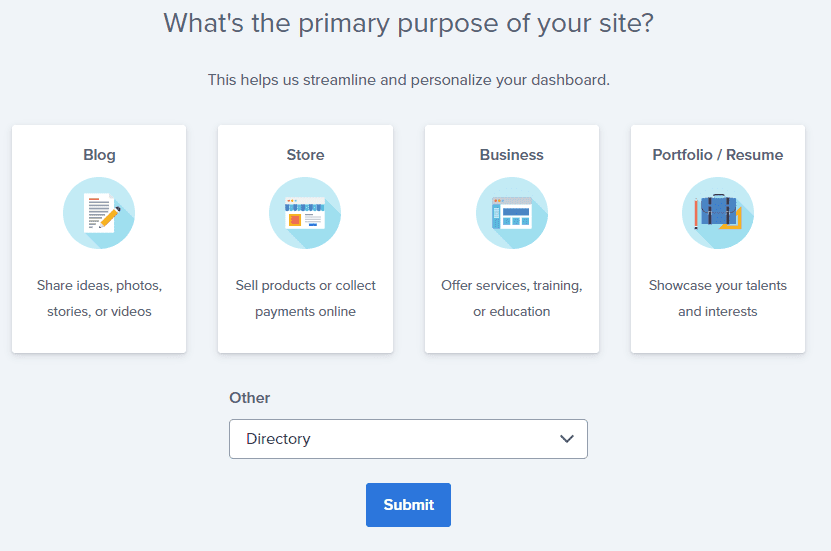
12. On the next page, click Skip this step.
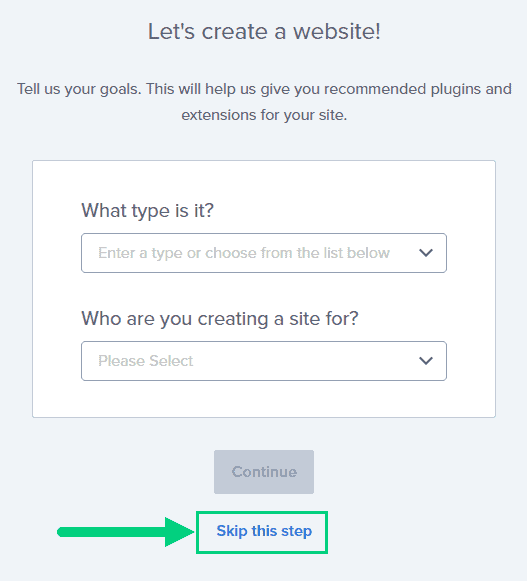
13. On the following page, enter the blog’s name and tagline. You can change this later so feel free to click “Skip this step” or enter something as a placeholder and click Continue.
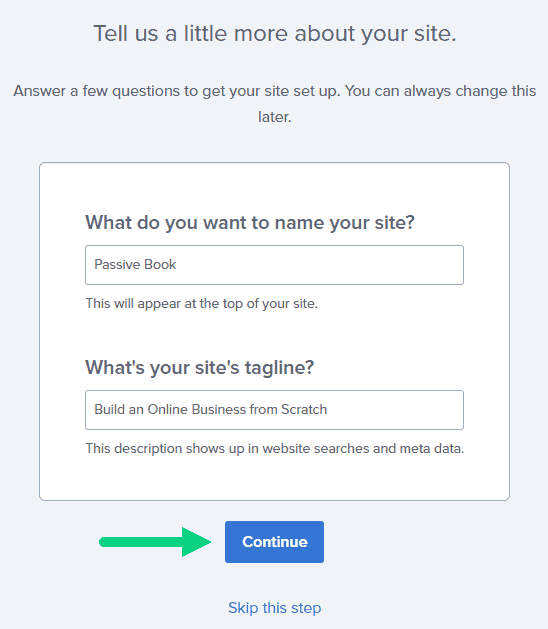
14. Finally you will be asked how you want to build your website. Choose “Limitless customization” to have all the options.

15. You can see your blog by going to yourdomain.com. Go to the Bluehost dashboard and click on the My Sites tab ❶ in the left sidebar and click on the “Manage site” button ❷.
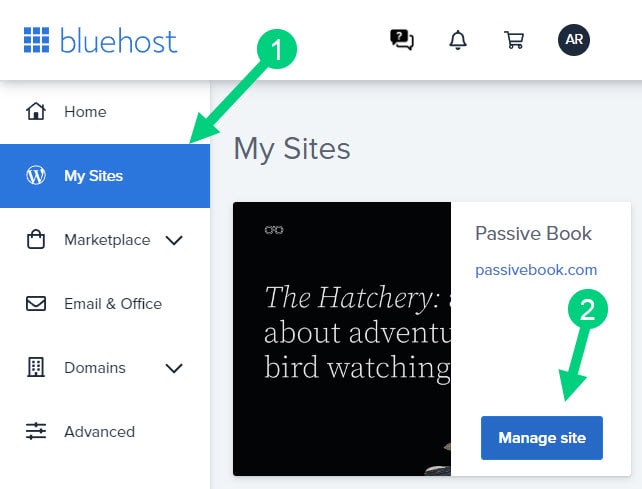
16. Your WordPress site has separate login credentials different from the ones you use to log into Bluehost. You can use this to log in to the WordPress dashboard directly without logging into Bluehost. To get this:
❶ Click on Users on top.
❷ You will be able to see your username and email that you can use to log in to WordPress.
❸ If you click on the three dots you will see the option to Reset your password. ❹
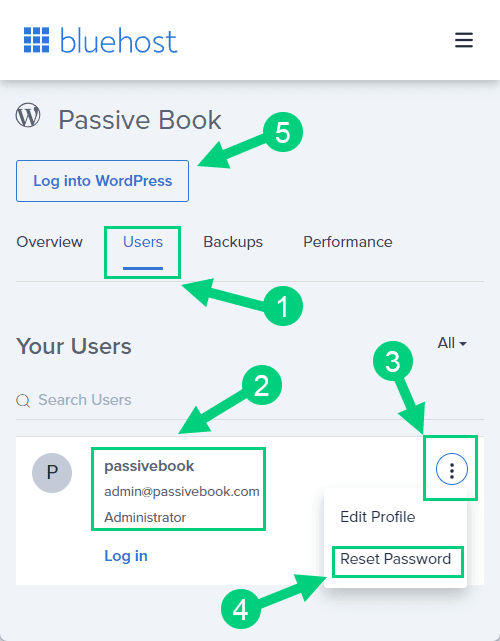
You can log into WordPress from the Bluehost dashboard by clicking the Log in to WordPress button ❺. But it is not recommended you rely on this as your primary login method because you will get locked out of your site if you ever change hosting providers.
17. You will be taken to the WordPress dashboard where you can reset your password ❶. If you don’t like the username Bluehost created for you, you can Add a New User ❷.

18. If you are adding a new user make sure you specify the user role as Administrator ❶. You can log in as the new user and safely delete the default user created by Bluehost.
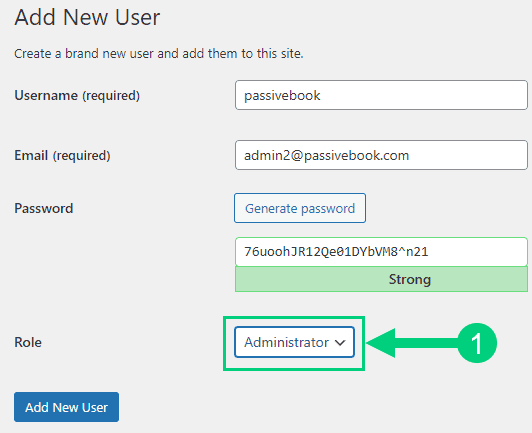
Congratulations! You have successfully set up WordPress.
Configure WordPress
Now that you have the basic version of WordPress installed, it is time to customize it to make it look and feel the way you want.
Login to WordPress Dashboard
The WordPress Dashboard is the area where you control all the settings for your website. It includes options for editing your pages and posts, adding new content, changing your theme, adding plugins, configuring settings, and more.
Visit yourdomain.com/wp-admin to access the WordPress dashboard.
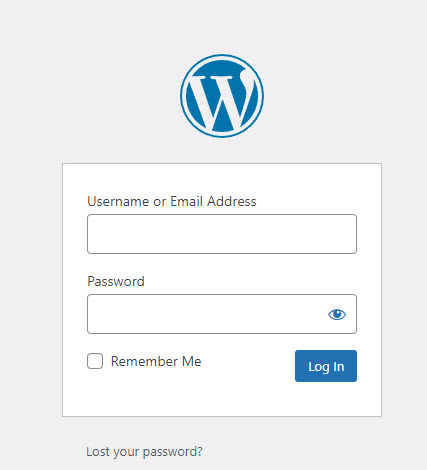
Use the Email and Password you provided during installation to log in to your WordPress dashboard. If you don’t have a password, use the “Lost your password?” to generate a new password.
Install WP Themes
A WordPress Theme is a collection of files that control the look and feel of your website. It includes the design of your website’s header, footer, sidebar, font styles, and more.
Your new WordPress blog will be installed with a default blog theme that doesn’t look very great.
To install a new WordPress Theme:
Go to Appearance > Themes > Add New in your WordPress dashboard.
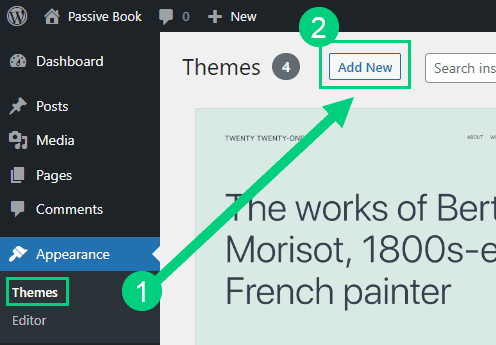
Use the search to find a theme that you like ❶. Before you install the theme, you can see a demo of the theme and learn about its features from the preview screen ❷. If you like the theme, you can install it by clicking the install button ❸. You can also upload a theme from a file on your computer ❹.
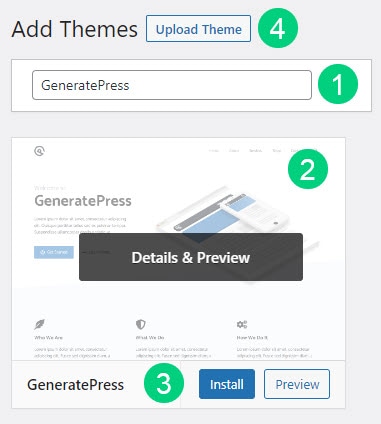
Once installed, click the Activate button to enable the theme.
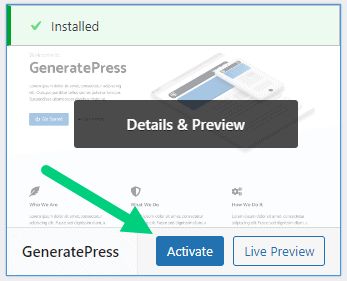
Although you can use a free theme (there are thousands of free themes available), we recommend using a premium theme.
Premium themes not only reduce your website’s load time but also help you customize your website to your heart’s desire.
Here are the premium themes we recommend:
There are also several custom-made design blog themes. These themes tend to be bloated with poor code which will slow down the performance of your website. We suggest getting one of our recommended themes for a fast website with unlimited customization possibilities.
Install WP Plugins
WordPress Plugins are applications that you can install into your WordPress website to add new features and functionality.
There are tens of thousands of WordPress plugins available and they can do everything from adding social media buttons to your website to creating a contact form to optimizing your website for search engines.
Too many wordpress plugins can slow down your blog site. So before you install new plugins, it will be worth clearing out any existing plugins that your hosting provider installed by default.
Plugins first need to be deactivated before they can be deleted.
❶ Go to WP Admin > Plugins > Installed Plugins
❷ Click on the checkbox to select all plugins.
❸ Select Deactivate from the drop-down.
❹ Click Apply.
❺ Repeat the above steps but select “Delete” instead of “Deactivate” from the dropdown in ❸ to delete all the deactivated plugins.
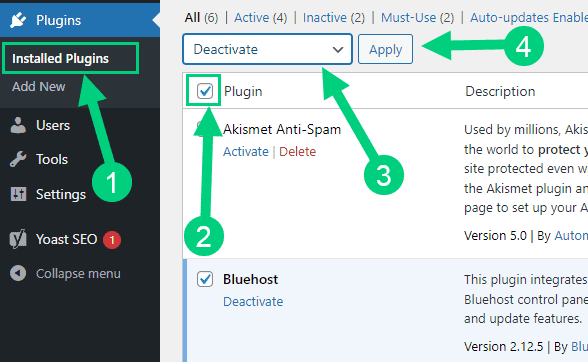
To install new plugins go to the WP Admin > Plugins > Add New.
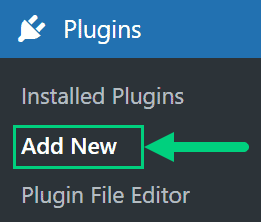
On the plugins page:
❶ Search for the plugin you want in the search bar
❷ Click Install Now. Once you install the plugin, you must also activate the plugin for it to be enabled.
❸ If you are installing a paid plugin you can upload the plugin instead.
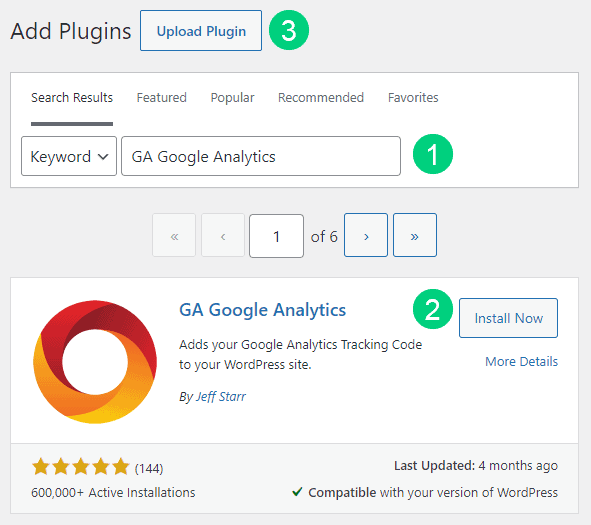
There are many different design blog plugins that you can install, but here are the ones which we recommend:
Backup Plugin: A WordPress Backup Plugin is a plugin that you can use to create backups of your website. This is very important in case something goes wrong with your website and you need to restore it to its previous state.
Recommended Plugin: WPVivid (paid) or UpdraftPlus (free).
SEO Plugin: A WordPress SEO Plugin can be used to improve your website’s search engine rankings.
Recommended Plugin: RankMath (paid).
Google Analytics Plugin: A WordPress Google Analytics Plugin is used to collect data about how your website is being used. This data can then be used to improve your website’s performance.
Recommended Plugin: RankMath (paid) or GA Google Analytics (free).
Cache Plugin: A WordPress Cache Plugin can be used to speed up your website by caching your website’s pages and posts. The plugin will save a copy of your website’s pages and posts so that they can be served faster to your visitors.
Recommended Plugin: WP Rocket (paid).
Page Builder Plugin: A WordPress Page Builder Plugin can be used to create custom pages and posts for your website.
Recommended Plugin: Thrive Architect (paid).
Security Plugin: A WordPress Security Plugin can be used to protect your website from hackers and other security threats. Some of the features that a WordPress Security Plugin may provide include password protection, two-factor authentication, firewall protection and malware scanning.
Recommended Plugin: Wordfence (free).
Social Media Plugin: A WordPress Social Share Plugin allows you to add social media buttons to your website. This allows your visitors to share your content on their social media profiles with one click.
Recommended Plugin: Easy Social Share Buttons (paid).
Email List & Lead Generation Plugin
A WordPress Email Opt-in Form Plugin can be used to collect the email addresses of your website’s visitors. You can use it to build a list of email subscribers who can be contacted with new blog posts, products, or other offers.
Recommended Plugin: Thrive Leads (paid).
Gallery Plugins: A WordPress Gallery Plugin can be used to add photo galleries to your website. You can use it to showcase your best work on your blog, or engage with your visitors by creating photo contests and other engaging content.
Recommended Plugin: Envira Gallery (paid).
Customize WordPress
Once you have installed your theme and plugins, it is time to customize the wordpress blog platform:
Change Colors, Fonts & Spacing
You can set the font, colors, and spacing by going to Appearance > Customize in your WordPress dashboard. Premium themes like GeneratePress allow you to customize every aspect of your blog.

Check out our Blog Fonts & Typography guide to choose the right font and typography settings for your blog.
Add Your Logo
Get a logo designed for your blog from Fiverr. Then set the logo of your blog by going to Appearance > Customize in your WordPress dashboard. A logo is not required for a successful blog but it can definitely help appeal to your target audience.
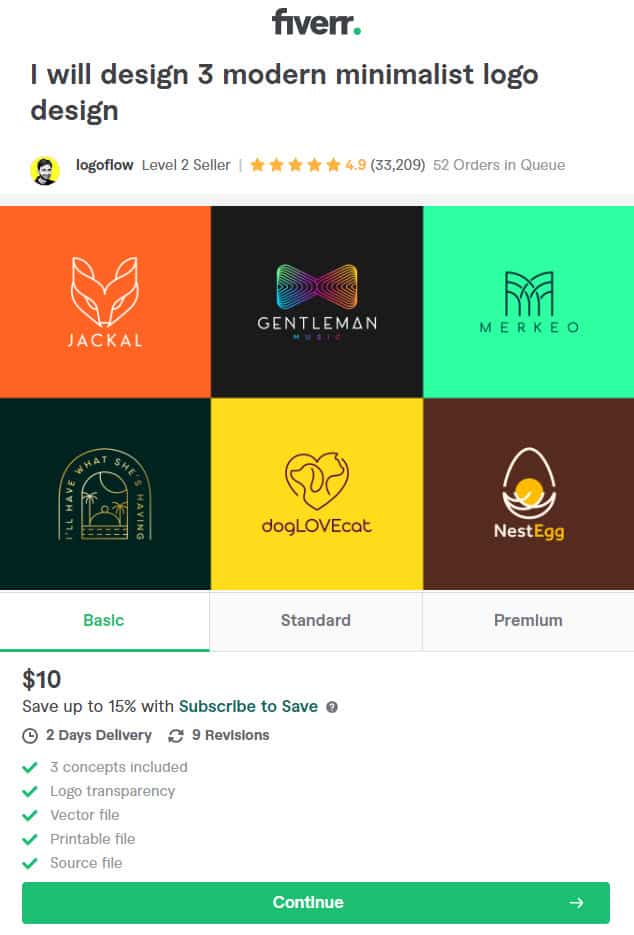
Change Favicon
Favicon is the image that appears in the browser tab and bookmarks. Set the Favicon from the Appearance > Customize section of the WordPress dashboard.

Create Menus
The header and the footer menu can be set from the Appearance > Menus in your WordPress blog dashboard.
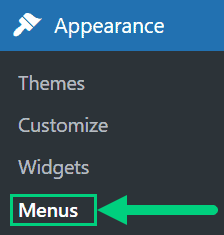
You can nest menu items so that it appears as a dropdown menu ❶. You can use the menu as your primary or secondary navigation menu ❷. Don’t forget to save your menu ❸.
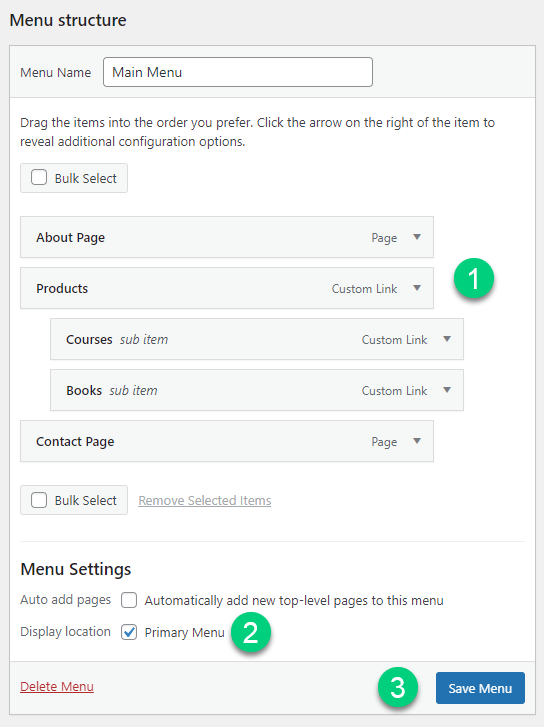
Create Widgets
If you have a sidebar, you can add widgets to it. Go to Appearance > Widgets in your WordPress admin dashboard.
Check out the list of the most useful Blog Widgets and how to add them to your blog.

Set Title & Tag Line
The next step is to change your General Settings. Go to Settings > General in the WordPress Admin area.
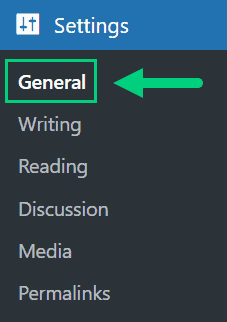
You can set your Site Title, Tagline, and Time Zone from this screen.
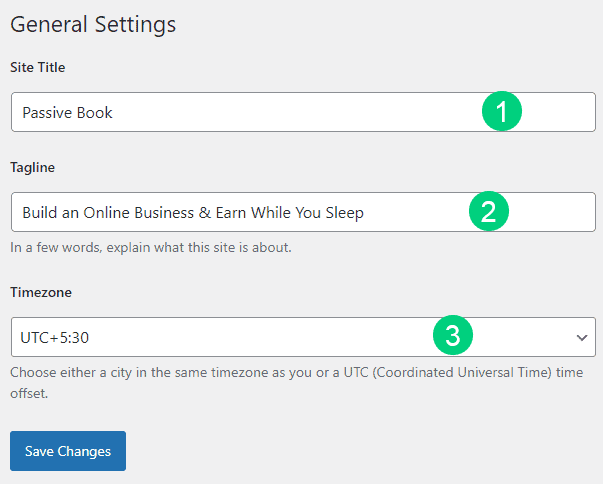
Set Permalinks
The ideal URL structure for SEO is yourdomain.com/sample-post. Set your permalink structure by going to Settings > Permalinks in your WordPress blog dashboard.

Select the “Post name” radio button and save changes.
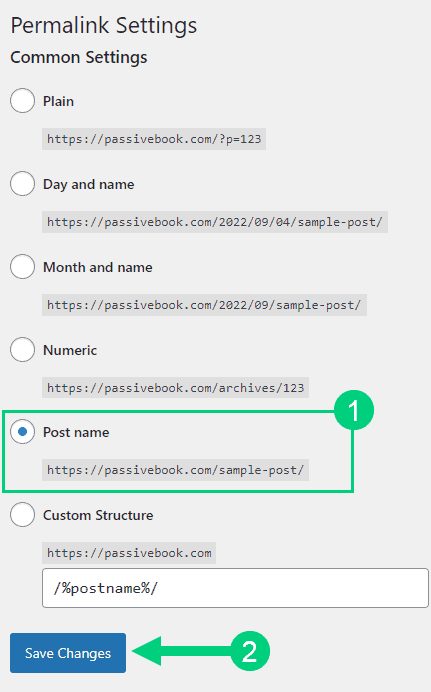
Enable Search Visibility
Chances are you want your blog to show up on Google so people can find you. Go to Settings > Reading in your WordPress dashboard.
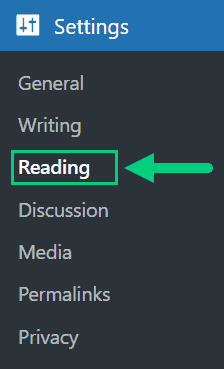
To get search engine traffic, ensure the checkbox “Disable search engines from indexing this site” is Unchecked. You can find this option in Settings > Reading. Most of the time this should be unchecked by default but if it is not, then uncheck it to ensure your site gets traffic from search engines.
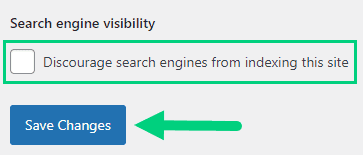
Adjust Comment Settings
Next, you will want to change the Discussion Setting (aka Comments). Go to Settings > Discussion in your WordPress admin area.
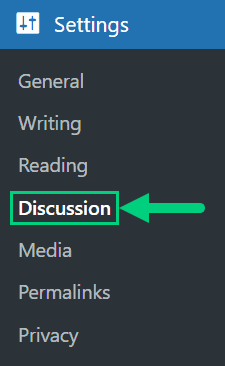
❶ You may want to enable or disable comments on this page. You can also disable pingbacks and enable comment moderation.
❷ You can also set comment approval settings.
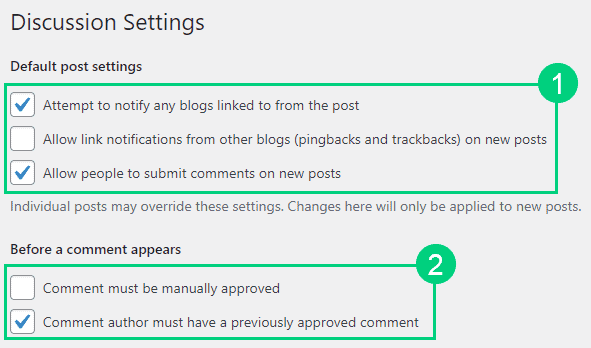
If you want to design your blog further, check out our dedicated guide on blog design which has all our best blog design recommendations.
Create Static Pages
There are a few essential pages that you need to create for your design blog before you can start blogging.
Use pages in WordPress to add static content. Go to WP Dashboard > Pages > Add New.
- Write the headline of your content.
- Populate the body content
- Click the publish button.
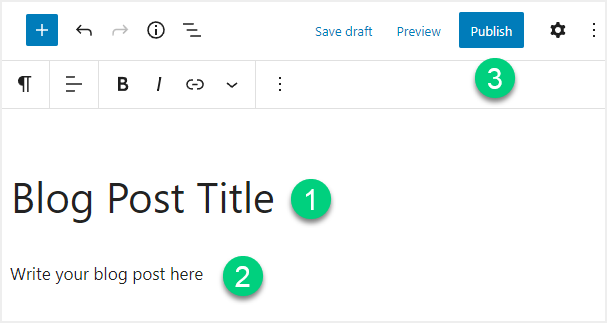
You may want to create the following pages:
Home Page
Your home page is the first page that your visitors will see when they visit your website. It is usually a page that contains an introduction to your blog, as well as some of your best content. You can create a home page by adding a page in WordPress and writing the content for it. You can also include a call to action, such as asking your visitors to subscribe to your blog or visit your services page.
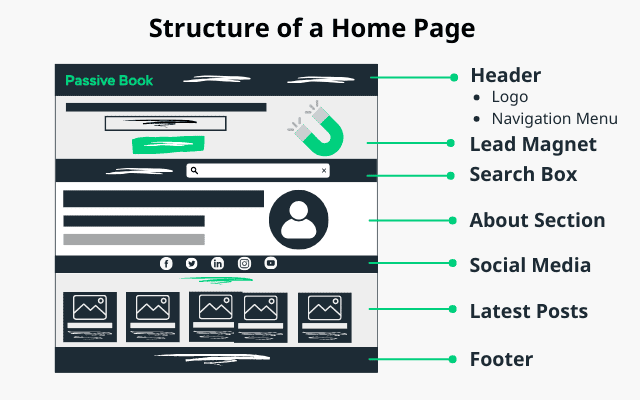
You can create a professional home page for your design blog using a page builder like Thrive Architect.
About Page
An about page is a page on your website that tells your visitors who you are and what you do. It is usually one of the first pages that visitors will visit when they arrive on your website, so it is important to make a good impression.
An About page should include information about the following:
- Who you are
- What you do
- Why you started blogging or designing
- What your blog or design philosophy is
- How you can be contacted
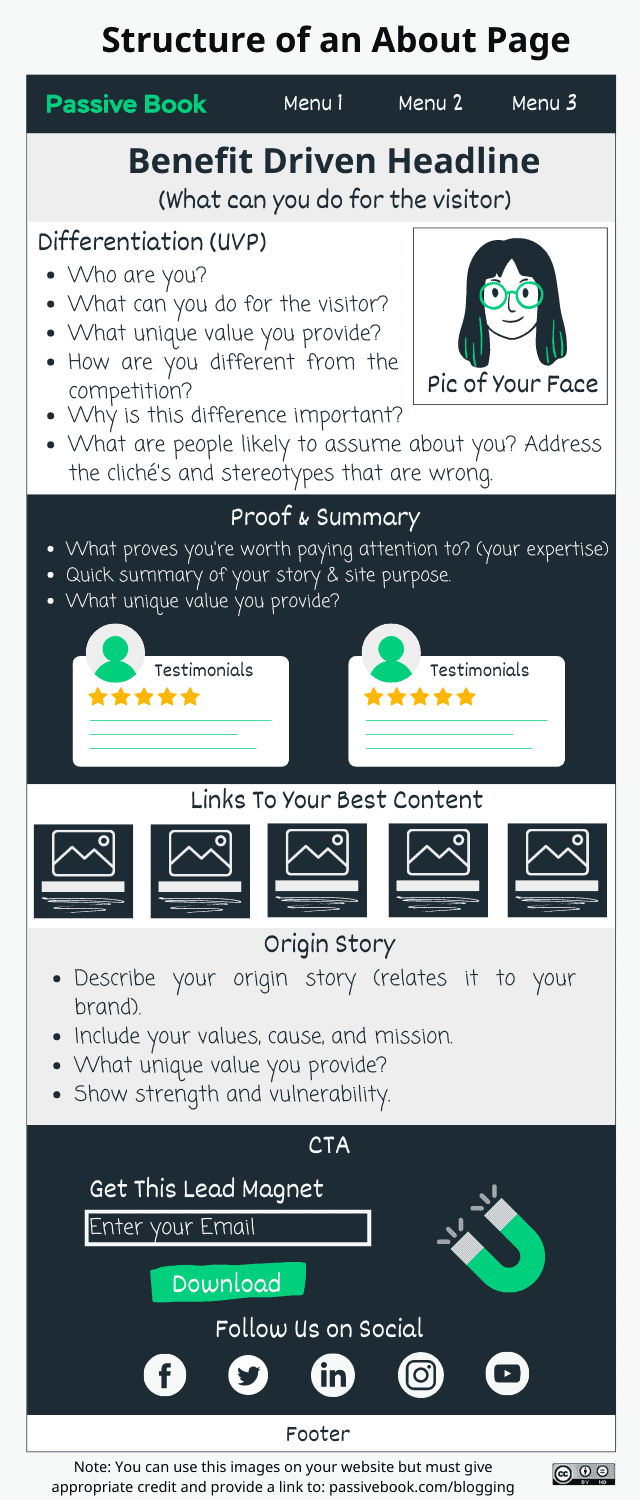
Contact Page
A contact page is a page on your website that gives visitors information about how to get in touch with you. This could be a form where visitors can submit questions or feedback, or it could simply include your contact details and social media profiles.
To create a professional contact page for your design blog, you can use an email opt-in form plugin like Thrive Leads to collect the email addresses of your website’s visitors. This allows you to build a list of email subscribers who can be contacted with new blog posts, products, or other offers.
Use contact form plugins like Fluent Forms to create the form on your contact page.
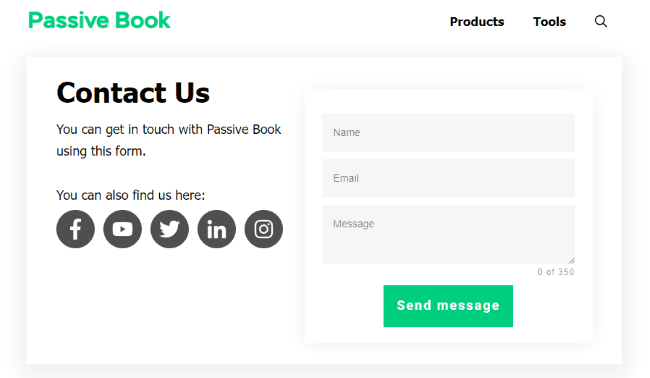
Privacy Policy
A privacy policy is a page on your website that outlines how you use the data of your visitors. This includes how you collect, store, and use any information that visitors give to you when they visit your website.
WordPress generates its own privacy policy for you. But you can also use a tool like Termly to generate your own privacy policy.
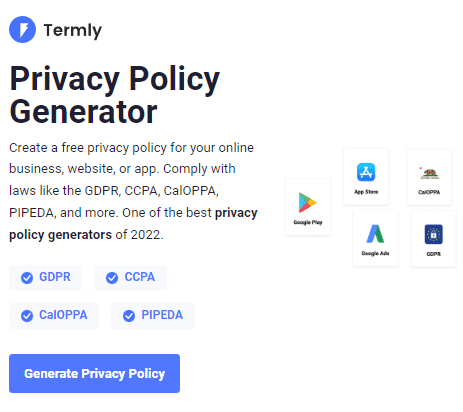
Terms of Service
A terms of service page is a legal document that outlines how you and your visitors should interact with each other on your website. This includes how visitors can use the content on your website or how they can use your products and services.
Use a terms & conditions generator like Termly to create it.
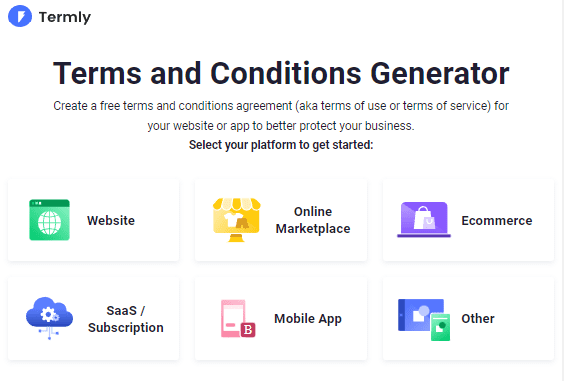
5. Write & Publish Blog Posts
Now that you have your design blog set up, it’s time to write and publish your first blog post. We have an in-depth guide on How to Write A Blog Post where we take you through the process step-by-step. Here we will go over specific tips for a design blog.
1. Brainstorm Topics
You should brainstorm 100 topic ideas for your design blog. This will ensure that you always have content to write about in your design blog.
The goal is to find topics for your design blog that your audience is searching for in Google. The type of content you write on your design blog will depend on your specific niche.
Here are a few design blog post ideas, you can potentially cover in your design blog:
- How to Posts
- List Posts
- Case Study
- Question posts
There are a few ways to brainstorm specific content:
Look at Competitors
If you want a successful design blog, you need to have an endless stream of ideas that you can blog about in your design blog. One of the best ways to do this is by reading the blogs of your fellow designers. Not only will you learn new techniques and get inspiration, but you’ll also generate content ideas to stay ahead of the competition.
To find your competition who is blogging about things similar to your blog, just Google keywords related to your blog. For example, if you have a fashion design blog you can google, “sustainable fashion” to find other successful blogs that blog about that particular topic.
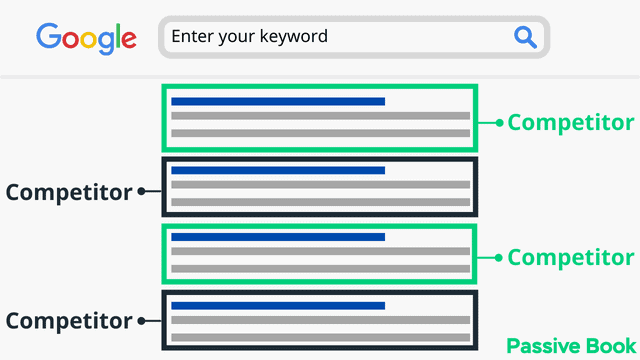
Do Keyword Research
One of the best ways to get ideas for content for your design blog is to do keyword research. This involves finding keywords that people are searching for in Google, and then creating content around those keywords.
You can use a tool like Keywordtool.io to find keywords related to your design blog. This will help you come up with content ideas that your audience is actively searching for.
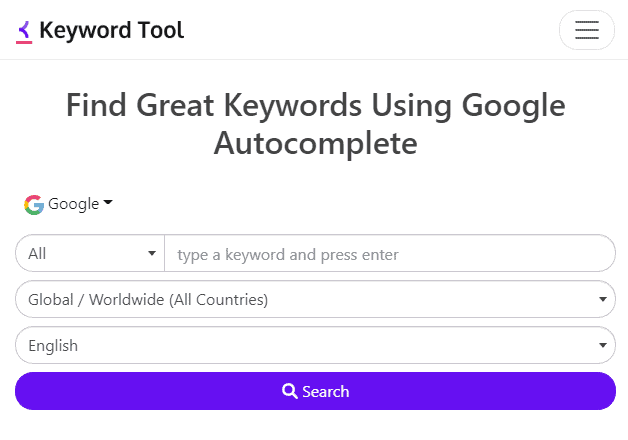
Community & Forums
Another great way to find topics for your design blog is to look at online communities and forums. This is where people go to discuss their favorite design topics and find new ideas.
You can either search for a specific forum or community that covers the topic you want to write about, or you can do a general search for design-related keywords.
You can find online communities and forums on Reddit and Facebook Groups.
2. Create an Editorial Calendar
After you have a list of content ideas, it’s time to start planning out your design blog posts. This is where an editorial calendar comes in.
An editorial calendar is a tool that helps you plan, organize, and publish your blog posts. It can be as simple as a spreadsheet that lists all of the blog posts you need to publish and when they’ll be published.
Download Content Calendar Template

Steal our exclusive content calendar template. Have it delivered directly to your inbox:
An editorial calendar should include the following:
- The topic of the blog post
- The author of the blog post
- The date the blog post will be published
- Any deadlines associated with the blog post
- Any notes or comments about the blog post
3. Write a Blog Post
Once you have your editorial calendar, it is time to start writing.
Write 5x Faster With AI
You can write your new blog post at 5x speed using the AI writing software Jasper. I was able to write over a hundred blog articles in 3 months using Jasper. This blog article you are reading right now was written with the help of Jasper. AI will not only help you write blog posts fast but also with higher quality.
Jasper can write plagiarism-free blog content, articles, social media content, emails, and ad copy. All you have to do is provide a few inputs on what you want and Jasper will do all the hard work of creating the blog content for you. No more writer’s block.
Check out the video below to see Jasper in action:
Try Jasper for free using the links on this page and get 10,000 bonus credits you can use to start writing your first articles.
Once you sign up for Jasper I recommend you spend some time going through the tutorial videos in the Jasper Bootcamp to truly unlock the power of this amazing software.
Check out our guide on How to Write a Blog Post Fast in 15 mins Without Losing Quality for more tips to write fast.
Create Portfolio Showcase
A portfolio showcase is a post that features a selection of your design work, along with information about each project. Portfolio showcases can help you demonstrate your skills and capabilities as a designer, and can also inspire other designers.
Example blog post titles:
- “Portfolio Showcase: [Project Theme]”
- “Design Portfolio: [Project Theme]”
- “Featured Projects: [Project Theme]”
- “Design Inspiration: [Project Theme]”
- “Design Case Studies: [Project Theme]”
To create a portfolio showcase, start by selecting a group of projects that you want to feature. Include a variety of projects that showcase your skills and range as a designer. For each project, provide a brief overview of the project, including details about the client, the design challenge, and the solution you provided.
Consider including photos or sketches to help illustrate your process, and provide any relevant links or resources. Also, include personal reflections or insights about each project, and be sure to properly attribute any contributors or collaborators.
Writing How-To Posts
One of the most popular types of content in design blogs is how-to posts. These are blog posts that walk your audience through how to do a specific task.
For example, if you have a design blog that covers how to use Photoshop, you can create a how-to post on how to create a 3D text effect.
Here are a few examples of a How-To Post for a Design Blog:
- How to Create a Cohesive Brand Identity
- How to Use White Space Effectively in Web Design
- How to Choose the Right Typography for Your Design
- How to Apply Color Theory to Your Designs
- How to Achieve a Minimalist Design
- How to Follow a Design Thinking Process
- How to Design with Accessibility in Mind
- How to Stay Up-to-Date with Graphic Design Trends
- How to Make a Mood Board for Your Next Design Project
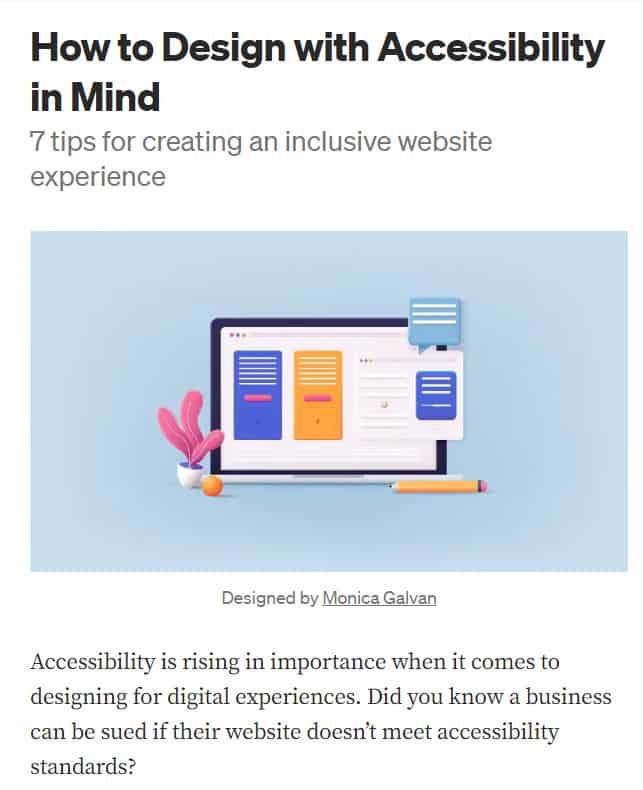
To write how-to blog posts, follow these steps:
- Introduce the task or skill you want to cover in your how-to post.
- Describe how to do the task step by step.
- Include any resources, images, or screenshots that you find helpful in your how-to post.
- End with a conclusion and how this skill or task can be applied in the real world.
Writing List Posts
Another popular type of content in design blogs is list posts, which are blog posts that contain a list of tips, ideas, or recommendations related to a particular topic or theme.
For example, if you have a fashion design blog, you could write a list posts on how to dress for different occasions like weddings and interviews.
Here are ten list blog post examples for a design blog:
- 10 Essential Tools for Graphic Designers
- 7 Habits of Highly Successful Graphic Designers
- 5 Common Mistakes to Avoid in Web Design
- 9 Inspiring Graphic Design Portfolios to Check Out
- 6 Tips for Creating Effective Infographics
- 8 Must-Have Skills for a Career in Graphic Design
- 4 Ways to Stay Creative as a Graphic Designer
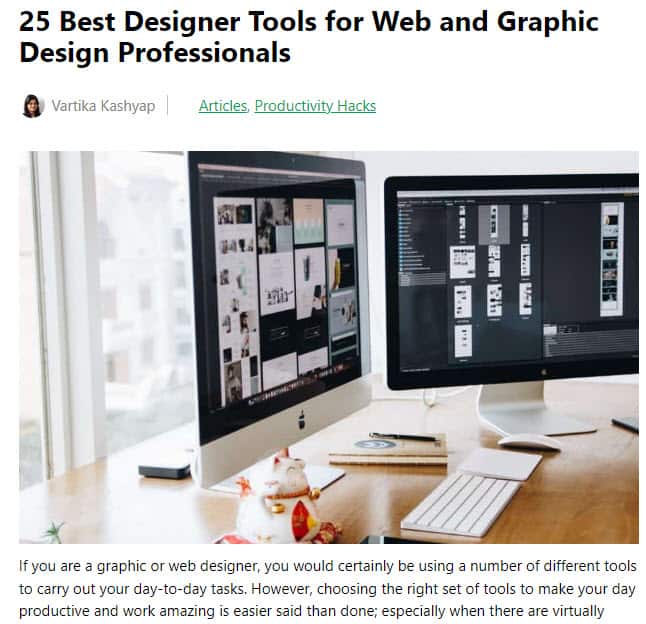
To write list posts, follow these steps:
- Come up with a list of tips, ideas, or recommendations related to your topic.
- Organize the list into clear sections and subsections that are easy to understand.
- Write a brief introduction explaining how each tip in the post can help your audience.
- End with a conclusion that sums up how following your tips can benefit your audience.
Writing Opinion or Perspective Posts
An opinion or perspective piece is a blog post that expresses the writer’s views on a particular topic. These types of posts can be a good way to spark discussion or debate and offer the writer’s unique perspective on a topic.
Here are a few examples:
- Why Responsive Design is Essential for Modern Websites,
- The Case for Flat Design,
- The Pros and Cons of using Stock Photography,
- Why Print Design Isn’t Dead
- The Importance of Diversity in Design.
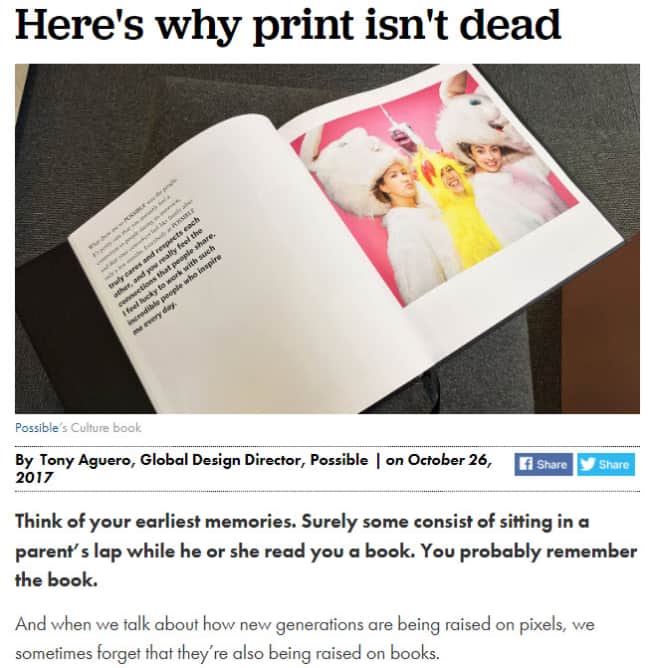
It’s important to have a clear and well-defined point of view on the topic you’re writing about. Back up your opinions with examples, data, or other evidence, and be respectful of differing viewpoints.
Writing Case studies
A case study is a detailed account of a specific design project or challenge and the steps taken to overcome it. These types of posts can be a great way to showcase your work and share valuable insights with your readers.
Here are a few examples:
- Designing a New Website for a Nonprofit Organization
- Redesigning a Corporate Identity for a B2B Company
- Creating a Packaging Design for a New Product Launch
- Designing an Event Branding for a Music Festival
- Developing a Marketing Campaign for a Small Business.

To write an effective case study, it’s important to be detailed and specific about the design challenge you faced, the steps you took to overcome it, and the results you achieved.
Include plenty of visuals, such as before and after images, process sketches, and final designs, to help illustrate your story.
Writing Interviews
An interview is a conversation with someone, typically conducted by a journalist or blogger, in which the interviewer asks the interviewee questions about a particular topic. Interviews with industry experts, designers, or clients can provide a fresh perspective and valuable insights for your readers.
Here are a few examples:
- Interview with a UX Designer at Google
- Conversation with a Graphic Designer for Major Brands
- Q&A with a Freelance Illustrator
- Chat with a Creative Director at a Design Agency
- Interview with a Founder of a Design Conference.

It’s important to have a clear focus for the conversation and to prepare a list of well-thought-out questions beforehand. Listen actively to the interviewee’s responses and follow up with any relevant questions that may arise. Don’t be afraid to ask tough or controversial questions, but be respectful of the interviewee’s time and opinions.
Writing News and updates
News and updates are blog posts that keep your readers informed about the latest trends, events, and happenings in the design world. These types of posts can help keep your readers engaged and provide valuable information that they may not be able to find elsewhere.
Here are a few examples:
- New Adobe Creative Cloud Updates You Need to Know About
- The Top Graphic Design Conferences of 2025
- The Latest Trends in Web Design
- Upcoming Design Exhibitions and Events
- New Design Books to Add to Your Reading List.
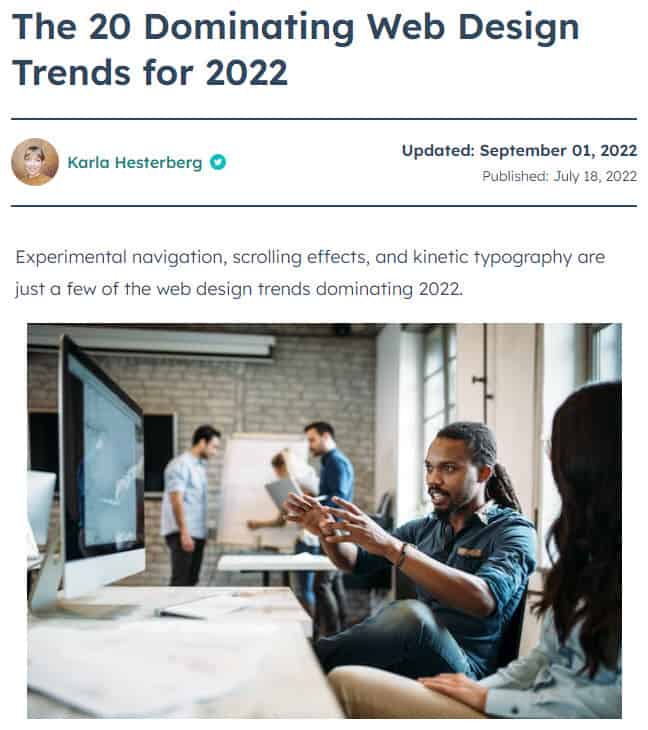
To write effective news and updates, it’s important to stay current and be able to quickly identify and report on the most important developments in the design world. Be sure to include links to the original source of the news or update, and verify the accuracy of the information you’re sharing.
Consider including your own perspective or analysis on the news or update, and how it may impact your readers or the design industry as a whole.
Writing Reviews
A review is a post that shares the writer’s thoughts on design-related products, tools, or services that they have tried. These types of posts can be helpful for readers who are considering purchasing or using these products and can provide valuable insights and recommendations.
Here are a few examples:
- Review of the Adobe Creative Cloud Suite
- Evaluating the Best Website Builders for Small Businesses
- A Look at the Top Project Management Tools for Designers
- Testing Out the Latest Design Apps for iOS and Android
- Comparing Different Online Printing Services.
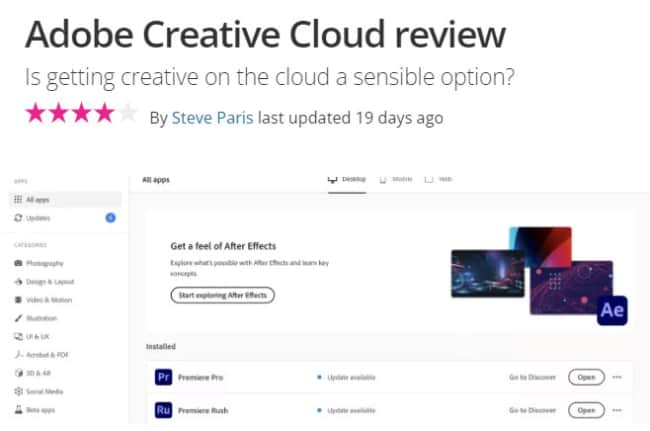
Be honest and objective in your assessment of the product or service you’re reviewing. Cover all the key features and provide both the pros and cons of the product. Include visuals, such as screenshots or photos of the product in use, to help illustrate your points.
Writing Personal Stories
A personal story is a blog post that shares the writer’s experiences, challenges, and lessons learned as a designer. These types of posts can be a great way to connect with your readers and share your unique voice.
Here are a few examples:
- My Journey from Graphic Design Intern to Creative Director
- Overcoming Imposter Syndrome as a Designer
- Lessons Learned from a Failed Design Project
- How I Found My Niche in the Design Industry
- My Experience Freelancing as a Designer
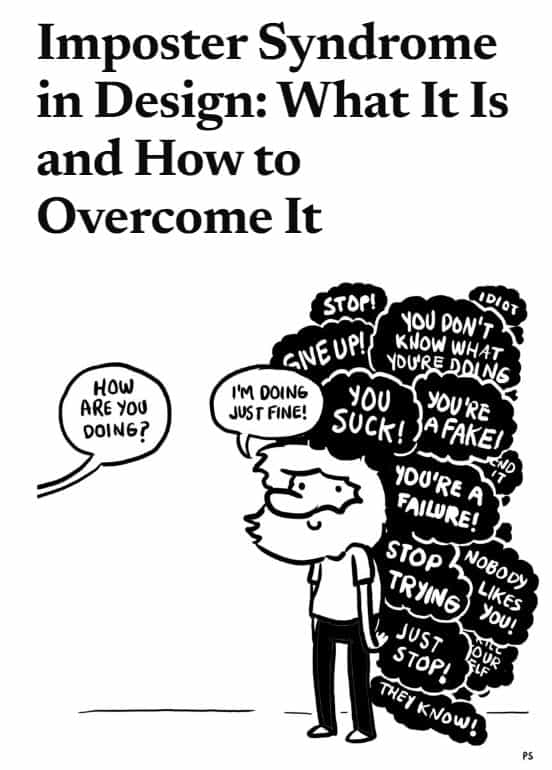
Be authentic and genuine in your writing. Think of what makes your story unique and what you learned from your experiences that others may find valuable. Include plenty of detail and specific examples to help illustrate your points.
Outsource Writing
If you don’t have the time or resources to write all of the content for your design blog, you can always outsource writing to a freelance writer.
There are many websites where you can find freelance writers, including:

When outsourcing writing, be sure to give clear instructions on what you want the final product to look like. You should also provide examples of other blog posts that the writer can use as inspiration.
4. Add Images
Images are an important part of any design blog post. Not only do they make your posts more visually appealing, but they can also help to break up large blocks of text and make your content easier to consume.
When adding images to your design blog posts, be sure to:
- Use high-quality images that are relevant to the topic of your post.
- Optimize your images for SEO by adding keywords to the file names and alt text.
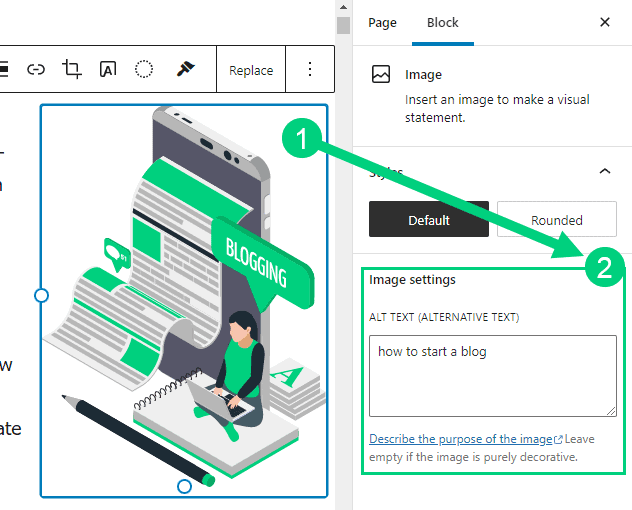
The best images are the ones that you create yourself. If you’re a graphic designer or illustrator, consider creating your own original illustrations and graphics to include in your posts. If you are an interior or fashion designer you can capture images with your camera.
While it’s always preferable to use high-quality, original images in your blog posts, sometimes you don’t have the time or resources to create your own. In these cases, it is perfectly acceptable to use stock images.
When using stock images, be sure to:
- Use high-quality images that are relevant to the topic of your post.
- Crop and resize the images to match the dimensions of your blog post.
- Add keywords to the file names and alt text.
You can find stock images on several websites, including:
Free Options: Pixabay, Pexels, Upsplash
Paid Options: Deposit Photos, Shutterstock, iStock, Getty Images, 123rf.
You can use Canva to edit your images. This is a free online tool that makes it easy to crop, resize, and add text to your images.

If you’re looking for high-quality, royalty-free images to use in your blog posts, then upgrading to Canva Pro can be a great investment. With Canva Pro, you gain access to a library of high-resolution stock images that you can use in your designs. Plus, you also get access to a range of premium fonts and tools that make it easy to create beautiful designs.
6. Promote Your Design Blog
Once you have a few blog posts published, it’s time to start promoting your blog. There are many ways to promote your blog.
Search Engine Optimization (SEO)
SEO, or search engine optimization, is one of the most important aspects of running a successful design blog. This is because it helps you get more traffic from Google and other search engines by ranking higher in their search results pages for relevant keywords and topics.
There are many different ways that you can optimize your design blog posts for SEO, including:
- Using keyword-rich titles and descriptions
- Adding keywords throughout your post
- Optimizing your images for SEO
- Creating internal links to other related posts on your blog
Many factors go into SEO, and it can be a bit confusing to figure out where to start. You can master the more advanced SEO tactics by checking out our SEO Resources.
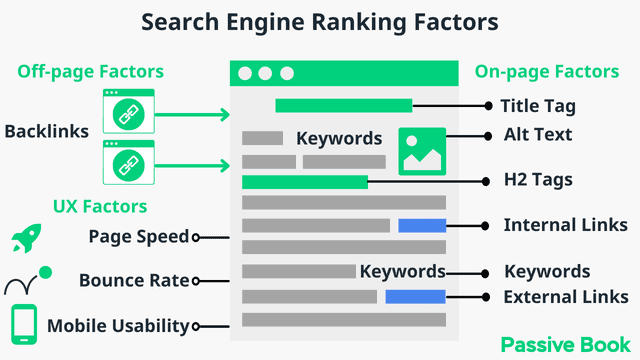
You can ensure you get the basics of SEO right, by completing the recommendations given by the RankMath plugin.
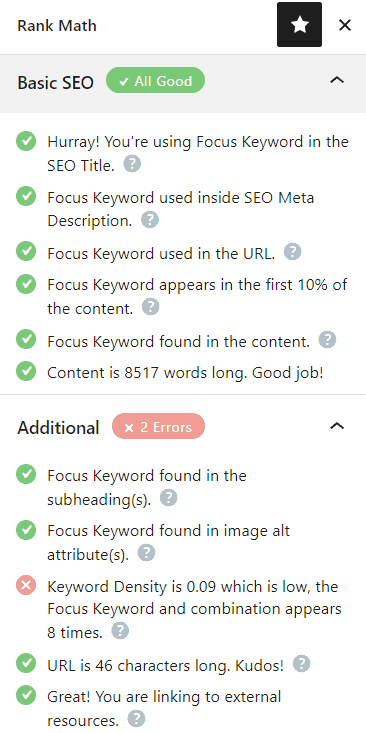
Email Marketing
Email marketing is another great way to promote your design blog. This involves building up a list of email subscribers who have opted in to receive updates from you. Then, whenever you publish a new blog post, you can send an email notification to your subscribers letting them know about it.
There are several ways that you can build up your email list, including:
- Adding an opt-in form to your blog
- Creating a lead magnet to encourage people to sign up
- Offering a discount or freebie in exchange for an email address
- Partnering with other businesses to run joint giveaways
You can then use email marketing to send emails to your subscribers.

You can use the Thrive Leads plugin to build opt-in forms to collect email addresses. You can then connect the opt-in form to an email marketing service like Active Campaign to send out the emails.
Check out our Email Marketing resources to learn more.
Social Media Marketing
Social media is another great way to get traffic to your design blog. This involves creating social media accounts on platforms like Facebook, Twitter, and Instagram and sharing your blog posts with your followers on these platforms.
When sharing your blog posts on social media, be sure to:
- Use engaging visuals (e.g., images, infographics, videos)
- Write attention-grabbing headlines
- Share your posts at times when your audience is most active
In addition to sharing your own blog posts on social media, you can also share other people’s content. When you do this, be sure to add your own commentary and insights so that people know why you’re sharing the post and how it’s relevant to your audience.
Sharing other people’s content is a great way to build relationships with other businesses and thought leaders in your industry. It can also help you get more traffic to your blog as people who see your shares will start to become curious about what else you have to say.
Guest blogging
Guest blogging is another great way to get traffic to your blog, as well as to build relationships with other businesses and thought leaders in your industry.
When guest blogging, you write a blog post for another website or blog in your industry. In return, they allow you to include a link back to your own blog in your author bio.
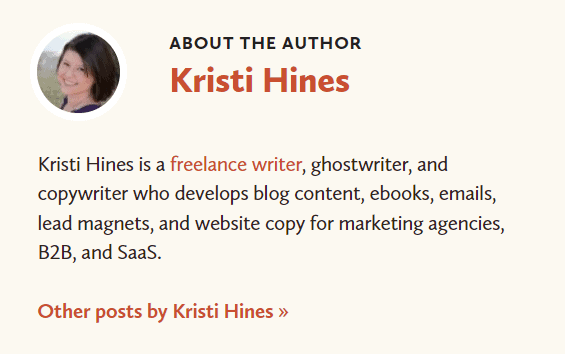
This is a great way to get exposure for your blog on other websites and blogs that your target audience is reading. It can also help you build relationships with other businesses and thought leaders in your industry.
To find guest blogging opportunities, you can search Google for “guest post” + your niche. For example, if you’re writing about design, you could search for “guest post” + “design blog”.
7. Monetize & Make Money
There are many different ways to monetize your design blog and make money online. Some popular options include advertising, affiliate marketing, selling digital products, and selling physical products. We will look at this in more detail.
Advertising
One option for monetizing your design blog is advertising. With this approach, you sell ad space on your site to other businesses that want to reach your audience.
To get started with advertising, you can sign up for an ad network that allows you to easily place advertisements on your site and earn revenue based on how much traffic you receive.
To start advertising on your blog, you can sign up for an ad network like Ezoic (they pay more than Google Adsense). When your blog starts getting more than 100,000 page views a month you can monetize with Adthrive.
| Ad Network | Earnings Per 1K Impressions (EPM) | Monthly Traffic Requirement |
|---|---|---|
| Ad Thrive | $13 | 100,000 |
| Ezoic | $3 | 10,000 |
| Media.net | $1 | – |
| Google Adsense | $1 | – |
Affiliate Marketing
Affiliate marketing is another popular option for monetizing your blog. With this approach, you promote other people’s products or services on your blog and earn a commission whenever someone buys something through one of your links.
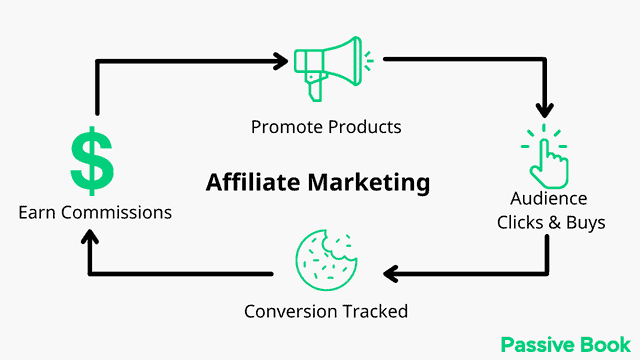
For example, let’s say you have a design blog and you write a post about the best design software. In that post, you could include affiliate links to the software programs that you recommend.
If someone reads your post and clicks on one of your links, they will be taken to the software company’s website. If they then decide to buy the software, you will earn a commission on that sale.
Affiliate marketing is a great way to monetize your blog because it allows you to earn revenue from products or services that you recommend.
To find affiliate programs to join, you can search Google for “affiliate program” + your niche. For example, if you’re writing about design, you could search for “affiliate program” + “design blog”.
Digital Products
Another option for monetizing your blog is to sell digital products. These are products that can be downloaded and used electronically, such as eBooks, online courses, and software programs.
Selling digital products is a great way to monetize your blog because it allows you to create products once and then sell them multiple times.
I Love Typography sells fonts on their blog.
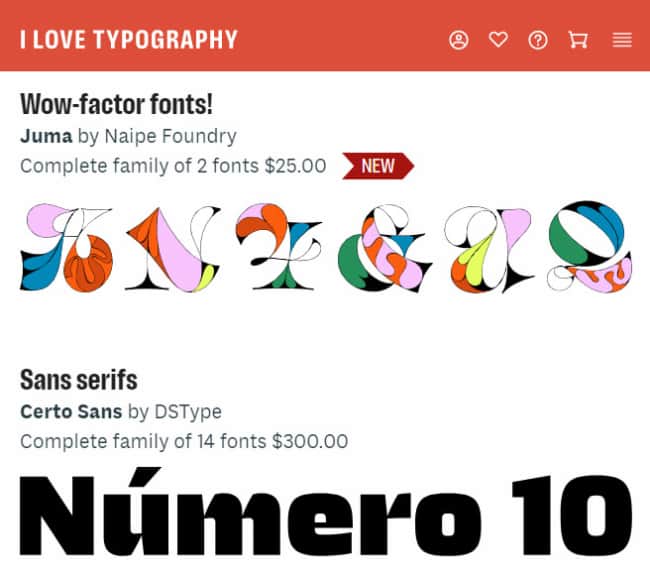
You can use Teachable if you want to sell video courses. Your students will have a dedicated course members area and a community system to ask questions and interact with each other. If you only want to sell eBooks, you can use SendOwl which lets you sell your digital products and eBooks for free.
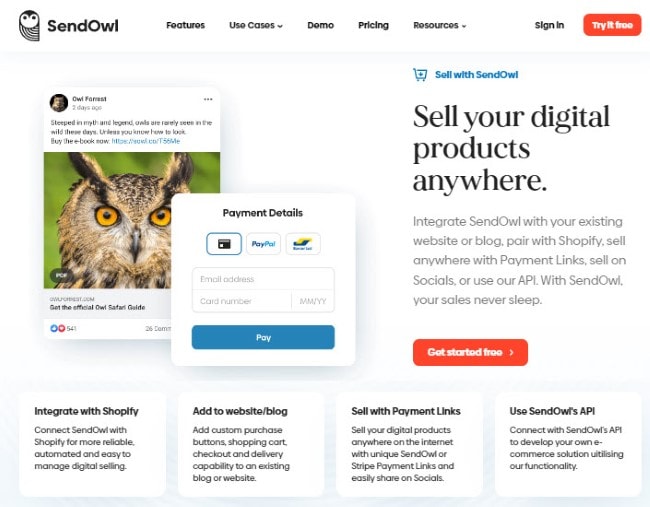
Sell Services
You can also monetize your blog by selling services. For example, you could offer web design or graphic design services on your site and then sell those services to clients.

To find potential clients, you can use online platforms like Fiverr or Upwork. You can also consider posting about available services in relevant Facebook groups or forums on Reddit and Quora.
Physical Products
Finally, another option for monetizing your blog is to sell physical products. This refers to tangible items that can be shipped to customers, such as clothing, accessories, home decor items, and more.
Selling physical products can be a great way to generate revenue from your blog because it allows you to not only reach existing customers but also create new ones through word-of-mouth marketing.
To get started with selling physical products on your blog, you could look into opening an online store or partnering with an existing ecommerce platform like Etsy or Amazon.
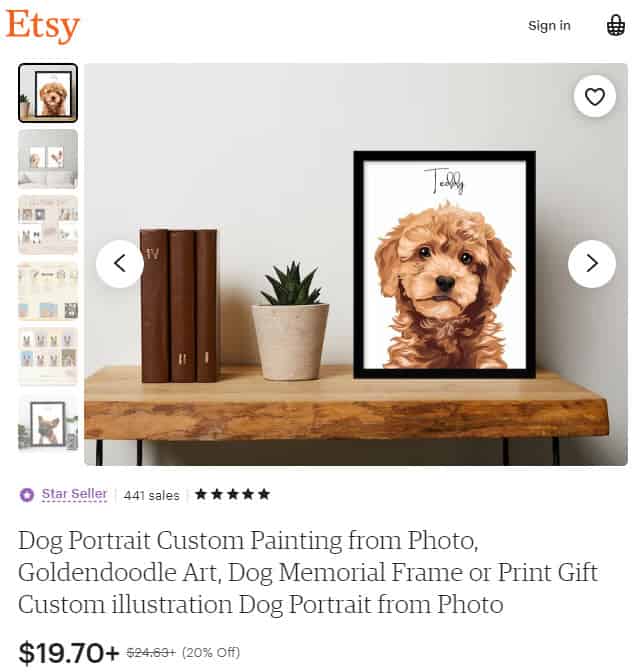
Sponsored Posts
Another popular way to monetize your blog is through sponsored posts. This is where businesses or individuals pay you to write about their products or services on your blog.
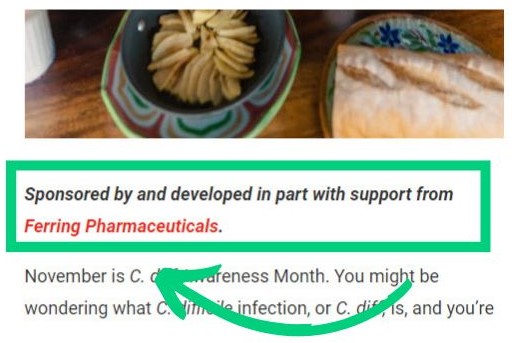
Sponsored posts are a great way to monetize your blog because they allow you to get paid for writing about products or services that you’re already familiar with.
To find opportunities for sponsored posts, you can search Google for “sponsored post” + your niche. For example, if you’re writing about design, you could search for “sponsored post” + “design blog”.
FAQ
Here are a few frequently asked questions:
How often should I post on my design blog?
This is completely up to you, but a good rule of thumb is to aim for 1-2 posts per week. This will give you enough time to produce high-quality content while also maintaining a regular posting schedule.
How do I promote my design blog?
There are several ways you can promote your design blog, including through SEO, social media, email marketing, and guest blogging.
What do I need to start a design blog?
How do I make money from my design blog?
There are several different ways to make money from your design blog, including affiliate marketing, selling digital products or services, selling physical products online, or through sponsored posts. The exact method that is best for you will depend on your audience and how much time you have to dedicate to your blog.
What makes a good design blog?
There are a few key elements that make a good design blog.
These include choosing a niche, creating useful and engaging content, using high-quality images and graphics, incorporating SEO into your posts, using social media to promote your content, and considering how to monetize your blog with advertising or affiliate marketing.
Additionally, it’s important to be consistent with your publishing schedule and respond promptly to any comments or inquiries from readers.
What Next?
Starting a design blog is a great way to share your passion for design with the world.
You will be able to build your professional credibility, monetize your skill and make money blogging, generate leads for your design services, network with other designers, and become a trusted expert in your field.
We hope this guide showed you how to start a design blog.
Are you ready to start your blog?
If you have any questions as you set up your new blog, leave a comment below so we can help you out.
Have you started your design blog yet? What type of design blog are you going to start? Let us know in the comments.
Share this post with your friends & followers:
